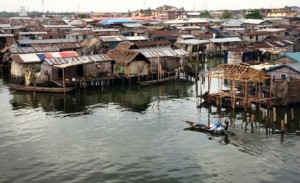Over the past decade, countries across Africa have shown increasing interest in comprehensive development plans that set ambitious social and economic development objectives. These plans move beyond the narrow objective of poverty reduction to encompass the wider objectives of accelerating growth, creating employment, and providing safe water, sanitation, health care and education within a framework of sustainable development. Moving forward, development planning and practice also needs to reflect the reality of the changing climate, and to ensure that investments consider future climate conditions.

Many African countries have a long-term vision to guide their steps towards ambitious development goals. In many cases, countries are making concerted attempts to mainstream climate adaptation into development planning. Although efforts to date have tended to be isolated, initiatives in disaster risk management, adjustments in technologies and infrastructure, ecosystem-based approaches, basic public health measures and livelihood diversification are reducing vulnerability to climate impacts.
More specifically, a number of African governments have developed National Climate Change Response Strategies or, in least developed countries, National Adaptation Programmes of Action (NAPAs). As yet, implementation and integration of these and other strategies and programmes with economic and development planning is limited but growing. The development of NAPAs and early experience with National Climate Change Response Strategies, show that adaptation planning is evolving and becoming more integrated, multi-level and multi-sector. Ethiopia’s Programme of Adaptation to Climate Change, for example, covers sectoral, regional, national and local community issues. Mali integrates adaptation into many sectors. Nigeria’s NAPA was produced a few years ago through a private-public sector collaboration.
Nigeria, as a member of the Adaptation Fund Board, is working towards accessing the fund and in line with the requirements is the designation of a National Implementation Entity (NIE). Consequently, the authorities have nominated the Bank of Industry (BOI) as an applicant candidate as the NIE, and the application is presently before the accreditation panel of the Adaptation Fund.
National climate-resilient development strategies include Rwanda’s National Strategy on Climate Change and Low-Carbon Development. Niger, Zambia and Mozambique are involved in the African Development Bank Pilot Program for Climate Resilience. Zambia’s Sixth National Development Plan 2011–2015 and Niger’s new Economic and Social Investment Plan are examples of integration of climate resilience measures in national development plans.
Inter-sectoral climate risk management approaches are emerging in integrated water resources management, integrated coastal zone management, disaster risk reduction and land-use planning. Biodiversity planning to guide land use in South Africa incorporates design principles for climate change.
In some African countries, broader policy frameworks, such as Nigeria’s and Namibia’s National Policy on Climate Change, Zambia’s National Climate Change Response Strategy and Policy, and South Africa’s National Climate Change Response Policy White Paper reflect a commitment to climate adaptation. Gabon has proposed a National Coastal Adaptation Law. Lesotho’s coordinated policy framework involves all ministries and stakeholders. Nigeria’s National Policy on Climate Change represents a roadmap for all other sectors to key in; from which, for example, the Federal Ministry of Agriculture developed the Agriculture Resilience Framework. Ten countries were developing new climate-change laws or formal policies in 2012.
Managing for climate-related risks may involve experimenting with larger scale, new or more transformational adaptation measures than those already tried, and additional planning and investment. Adaptation measures that also deliver development benefits, now and in the future, offer significant opportunities. Moreover, people and societies may come to perceive or rank risks and potential benefits differently, thus decision-making processes should also allow for debates around diverse values and goals.
The IPCC reports a growing understanding of potential limits to adaptation in Africa. Climate change, combined with other stressors, may overwhelm the ability of people to cope and adapt, especially if there is a failure to address the root causes of poverty and vulnerability. Evidence is growing of the need to design new development trajectories that will reduce vulnerability, spread risk and build capacity to adapt.
